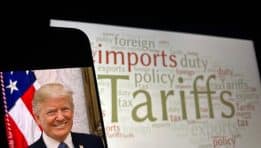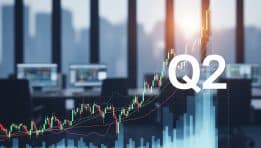The Impact of US Economic Concerns on Dollar Stability
Recent trends in the global economy show that the dollar is experiencing losses, primarily due to rising concerns about the U.S. economy. These concerns can stem from various factors, including inflation rates, unemployment figures, and shifts in consumer spending. Together, these elements contribute to an uncertain outlook for the dollar, affecting both domestic and international markets.
One major factor impacting dollar stability is inflation. When inflation rates rise, the purchasing power of the dollar decreases. For consumers, this means they can buy less with the same amount of money. For businesses, higher operational costs can squeeze profit margins. Often, the Federal Reserve, or the Fed, steps in to manage inflation by adjusting interest rates. If the Fed raises rates, it may support the dollar in the short term. However, if rising rates lead to a slowdown in economic activity, the long-term outlook for the dollar becomes murky.
Another crucial factor is the condition of the labor market. Concerns over unemployment figures can signal economic weakness. If job growth slows or if unemployment spikes, consumer confidence may wane. People are less likely to spend money when they feel insecure in their jobs. This can lead to decreased demand for goods and services, further straining the economy. A weaker labor market often translates to less investment and borrowing, putting additional pressure on the dollar.
Consumer spending is a vital component of the U.S. economy and directly impacts dollar stability. If you notice a trend where people are saving instead of spending, it may indicate economic apprehension. This shift can be caused by various factors, including rising costs of living or fears concerning future economic conditions. When consumer spending decreases, businesses earn less revenue, which can lead to lower production and hiring. This, in turn, can create a vicious cycle that undermines the dollar’s value.
Compounding these issues are geopolitical tensions and uncertainty. For instance, trade wars or conflicts can disrupt markets and create volatility for currencies—including the dollar. When investors perceive uncertainty, they usually flock to safer assets. This flight to safety often leads to a stronger dollar in the short term, but if economic concerns remain unaddressed, the long-term prospects of the dollar can diminish.
In addition to the factors mentioned, Federal Reserve appointments can also influence the dollar’s trajectory. The newly appointed members of the Fed can set different monetary policies that affect interest rates and the money supply. If new appointments appear more dovish, focusing on economic growth rather than combating inflation, it can lead to a weaker dollar. Conversely, if the new leadership takes a hawkish stance, emphasizing controlling inflation through higher rates, the dollar may benefit.
To summarize the complex relationship between economic concerns and dollar stability, consider the following key points:
- Inflation Rates: Rising inflation reduces dollar purchasing power, which can lead to decreased consumer confidence.
- Labor Market Conditions: Unemployment figures impact consumer spending, which is crucial for economic health.
- Consumer Spending: Shifts from spending to saving can indicate economic worries, adversely affecting the markets.
- Geopolitical Tensions: Events on the global stage can create volatility and influence currency perception.
- Federal Reserve Appointments: Changes in Fed leadership can lead to significant shifts in monetary policy, impacting the dollar’s strength.
Moreover, aiming for a stronger dollar may lead to conflicting priorities for the Fed. Higher rates can tame inflation but may stifle economic growth. Ultimately, balancing these economic indicators requires careful analysis and strategic decision-making from the Fed that aligns with the wider economic environment.
Understanding the impact of U.S. economic concerns on dollar stability involves looking closely at various interconnected factors. By focusing on inflation, employment trends, consumer behavior, global events, and Federal Reserve strategies, you can gain deeper insights into why the dollar holds losses amid economic uncertainty. As you navigate these complex dynamics, staying informed will be key to interpreting future movements in the dollar’s value.
Analyzing the Role of Recent Fed Appointments in Market Confidence
The current state of the U.S. economy is being closely monitored by analysts and investors alike, especially in light of recent Federal Reserve appointments. These changes at a crucial time raise questions about market confidence and monetary policy direction. Understanding these dynamics can help you grasp why the dollar continues to experience losses amidst growing economic concerns.
The Federal Reserve plays a central role in shaping economic policies. Appointments to this body can significantly influence market perceptions. The newly appointed officials have differing viewpoints, which could lead to unpredictable ramifications for the dollar and broader economic landscape. Their experience levels and philosophical approaches vary widely, which will be vital as the Fed navigates through uncertain economic waters.
Recent appointments have included figures with backgrounds in both academic economics and practical financial experience. This blend aims to balance theoretical approaches with real-world application. For instance, those who have previously worked in financial institutions can offer insights that might differ from those grounded strictly in economic theory. You might find it valuable to consider the following key factors regarding these appointments:
- Economic Freeness: Some members favor a lax monetary policy, believing low interest rates encourage spending and investment. This approach could boost market confidence, but it raises concerns about long-term inflation.
- Stability and Control: Others advocate for more controlled measures, emphasizing the need to manage inflation risks. Their focus on stability may appeal to conservative investors who worry about unchecked economic expansion.
- Communication Styles: How these appointees communicate can greatly affect market sentiment. Clear and decisive communication fosters trust and reliability, while mixed messages can create confusion and uncertainty.
The interplay between these appointees creates a complex environment. Their individual stances can pull the Fed in different directions, making it critical for you to stay informed about who is influencing economic policy. This is especially true now, given that ongoing inflation concerns and potential recession signals are raising red flags for investors.
You might be wondering how these appointments affect your daily life. A more favorable monetary policy could lead to lower borrowing costs and increased consumer confidence. Conversely, a tighter monetary stance may lead to higher interest rates, affecting your loans and mortgages. Understanding the nuances of these new appointments allows you to see how economic trends impact your purchasing power.
The reactions from the markets following these appointments showcase immediate changes in investor confidence. Generally, you can observe fluctuations in the stock market and the value of the dollar. When investors fear that the Fed may adopt an overly cautious approach because of certain appointments, it can lead to a decline in the dollar’s strength against other currencies.
For instance, consider how the reactions from global markets often mirror sentiment regarding U.S. economic policies. If you follow exchange rates, you may have noticed a dip in the dollar’s value following disconcerting news about the Fed’s direction. This effect is compounded when investors speculate about how these new appointees will influence the balance between growth and inflation.
Market analysts emphasize the need to maintain caution. The Fed’s decisions are complex and influenced by a myriad of factors, including economic data, global events, and public sentiment. You should monitor upcoming economic reports and Fed meetings closely, as these events can greatly affect the financial landscape. The appointments bring significant change, but incorporating multiple perspectives might ultimately result in a more resilient economic framework.
Ultimately, the role of the newly appointed Federal Reserve officials could set the tone for the U.S. economy moving forward. As you keep an eye on these developments, understanding the interplay of their philosophies provides a roadmap for anticipating shifts in the market. From consumer spending to investment trends, their impact will be felt throughout the economy, influencing the dollar’s performance, and determining overall market confidence. By staying informed and engaging with these issues, you can better understand how these changes might affect your financial decisions.
Conclusion
The current landscape shows that the dollar’s stability is closely tied to the ongoing concerns surrounding the U.S. economy. Economic indicators, such as inflation rates and employment figures, significantly influence investor sentiment, creating volatility in the currency’s value. When doubts arise about economic growth or stability, the dollar often suffers, reflecting the interconnectedness of these factors.
Recent appointments to the Federal Reserve have also played a critical role in shaping market perceptions. Market participants are keenly observing how new leadership will approach monetary policy, especially in light of rising inflation and interest rate adjustments. If the Fed demonstrates a commitment to tackling these economic challenges, it may bolster confidence in the dollar and restore stability. Conversely, any uncertainty regarding the direction of fiscal policies from the new appointees could exacerbate existing concerns, leading to further declines in the currency’s value.
As you navigate through these turbulent financial waters, keeping an eye on both economic indicators and Fed decisions will be essential. Understanding these dynamics can provide you with a clearer picture of the dollar’s future trajectory. Whether you are an investor, a business owner, or simply someone interested in economic trends, staying informed about the relationship between the U.S. economy and the actions of the Federal Reserve will prove invaluable. The dollar’s performance within this context is not just a financial statistic—it’s a reflection of broader economic health that affects you directly, highlighting the importance of these intertwined factors.
Comparison, examination, and analysis between investment houses
Leave your details, and an expert from our team will get back to you as soon as possible
* This article, in whole or in part, does not contain any promise of investment returns, nor does it constitute professional advice to make investments in any particular field.
To read more about the full disclaimer, click here- Lior mor
- •
- 16 Min Read
- •
- ago 2 hours
 Shares in South Korean Chipmaker SK Hynix Tumble on US Tariffs
Shares in South Korean Chipmaker SK Hynix Tumble on US Tariffs
The Impact of U.S. Tariffs on Shares in South Korean Chipmaker SK Hynix The ripple effect of U.S. tariffs can
- ago 2 hours
- •
- 16 Min Read
The Impact of U.S. Tariffs on Shares in South Korean Chipmaker SK Hynix The ripple effect of U.S. tariffs can
- Ronny Mor
- •
- 16 Min Read
- •
- ago 2 hours
 Trump’s Broad Tariffs Go Into Effect, Just as Economic Pain Is Surfacing
Trump’s Broad Tariffs Go Into Effect, Just as Economic Pain Is Surfacing
The Impact of Trump's Broad Tariffs on the U.S. Economy Amid Rising Economic Challenges The implementation of broad tariffs by
- ago 2 hours
- •
- 16 Min Read
The Impact of Trump's Broad Tariffs on the U.S. Economy Amid Rising Economic Challenges The implementation of broad tariffs by
- orshu
- •
- 9 Min Read
- •
- ago 2 hours
 Global Markets Recap: Wednesday, August 6, 2025 Performance Review and What to Expect for Thursday, August 7
Global Markets Recap: Wednesday, August 6, 2025 Performance Review and What to Expect for Thursday, August 7
Overview of August 6 Market Movements Across Americas, Europe, and Asia On Wednesday, August 6, 2025, global financial markets showed
- ago 2 hours
- •
- 9 Min Read
Overview of August 6 Market Movements Across Americas, Europe, and Asia On Wednesday, August 6, 2025, global financial markets showed
- sagi habasov
- •
- 16 Min Read
- •
- ago 3 hours
 Montrose (NYSE: MEG) Surprises with Strong Q2, Stock Jumps 24.7%
Montrose (NYSE: MEG) Surprises with Strong Q2, Stock Jumps 24.7%
Analysis of Montrose (NYSE: MEG) Q2 Financial Performance and Market Impact Montrose Environmental Group, Inc. (NYSE: MEG) reported an impressive
- ago 3 hours
- •
- 16 Min Read
Analysis of Montrose (NYSE: MEG) Q2 Financial Performance and Market Impact Montrose Environmental Group, Inc. (NYSE: MEG) reported an impressive












